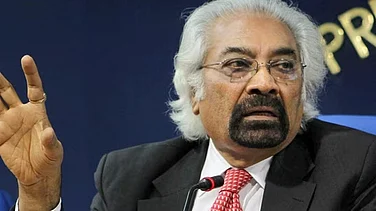Environmental activists have long held that massive landslides causing death and destruction is nature’s revenge against mega dams, tunnels and hydro-power projects in the ecologically sensitive zones of hill state Himachal Pradesh. Now even planners have started endorsing this view.
Though Y.S. Parmar, the first chief minister after Himachal attained full statehood on January 25, 1971, had a vision that envisaged small power stations for developing the region, successive governments led by either the Congress or the BJP chose building bigger dams instead. This fact has come to light in Devdhara, a book by Rachna Gupta, a journalist-turned-member of the Himachal Pradesh Public Service Commission (HPPSC). The book was released by Himachal Pradesh Governor Rajendra Vishwanath Arlekar.
Advertisement
“The state was highly deficient in resources, but Parmar had a task cut out—to raise resources, meet the livelihood needs of people and, at the same time, energise the state. Also called an architect of Himachal Pradesh, he proposed a three-dimensional policy to address the basic needs of people, who needed a range of facilities from firewood to electricity, and also give a boost to the local farm economy, mainly horticulture,” Gupta writes in the book.
Parmar realised that if small check dams are built on rivers and streams, the state would be able to generate sufficient power for households as well as industrial and commercial establishments. As the state has an ecological fragile mountain landscape, where tourism could be the biggest money-spinner and means of livelihood, Himachal should promote only small hydro-power projects—that was Parmar’s vision.
Advertisement
Chief secretary Ram Subhag Singh, who was present at the book launch, admitted that if Himachal promotes mini, micro and small hydel projects, it could achieve two things in one go. “Firstly, Himachal can play a role in addressing climate change. And secondly, it could become a powerhouse of the nation. Renewable energy is another area where Himachal can be a champion and work is already underway in this direction,” said Singh.
Himachal Pradesh, which is celebrating its 50th year and revisiting its development journey from a per capita income of Rs 650 to a GDP of around Rs 1.82 lakh crore, has been able to harness only 10,800 MW of hydro-power out of a total potential of 27,000 MW. There has also been opposition to big dams and mega projects in the districts of Kinnaur and Lahaul-Spiti after landslides caused deaths.
Gupta’s book, which gives insights into policies on agriculture, tourism, forestry and industry, also talks of protecting the environment and saving the state from the adverse impacts of climate change. She writes that the share of agriculture, which used to be 55.5 per cent of the state’s GDP in 1967-68, came down to 26.5 per cent in 1990-91, and is now further down to 12.73 per cent. This did help in increasing the GDP share of other sectors, including tourism and industry, but, Gupta argues, with a rural population of 89.96 per cent, Himachal must strike a balance in development policies and environmental protection measures.
Advertisement
Governor Arlekar says the book, published by the National Book Trust, will be a ready reference for researchers as well as visitors to the state in its golden jubilee year.




















